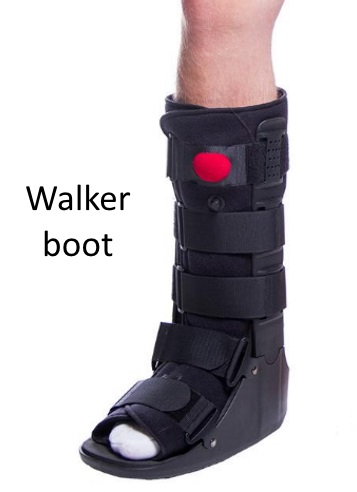The Achilles tendon goes from the calf muscle down to the back of the heel, and helps with moving the ankle in a downward direction, as would occur with standing on your toes.
The suffix "itis" refers to inflammation, so Achilles tendonitis is a condition where at the insertion of the Achilles tendon on the back of the heel, there is inflammation, usually due to partial tearing of this part of the tendon.
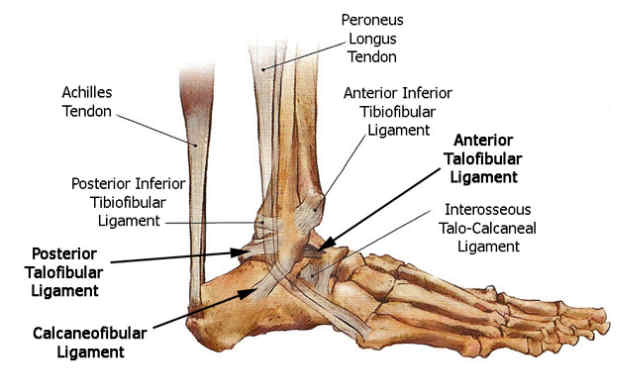
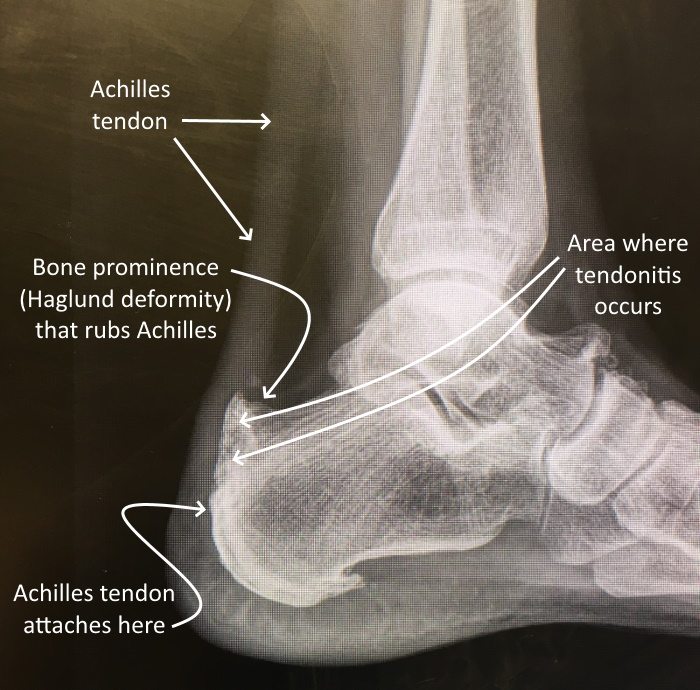
The Achilles tendon, seen in this diagram, attaches to the back of the heel bone (calcaneus) about halfway between the top and bottom of the back of the heel bone.
There is an area between the calcaneus and the tendon, just before the tendon attaches to the bone, where some rubbing can occur. This rubbing can cause partial tearing of the tendon, and inflammation of the bursa, which is the lubricating sac, between the tendon and the bone.
The x-ray here is on a patient with a prominent back side of the heel bone, a prominence called the Haglund deformity.
In the xray shown for this patient, due to chronic inflammation at the region where the Achilles attaches to the bone, the patient has developed bone spurs.
Another bone spur has developed on the sole of the foot where the plantar fascia attaches (for more info on plantar fasciitis, click here.)
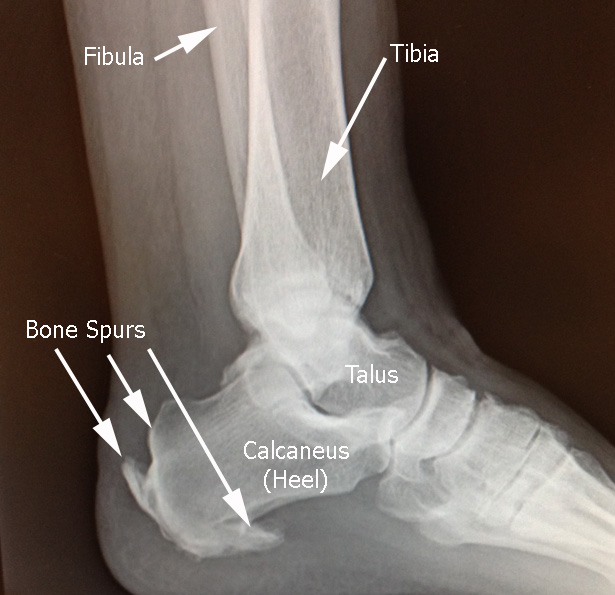
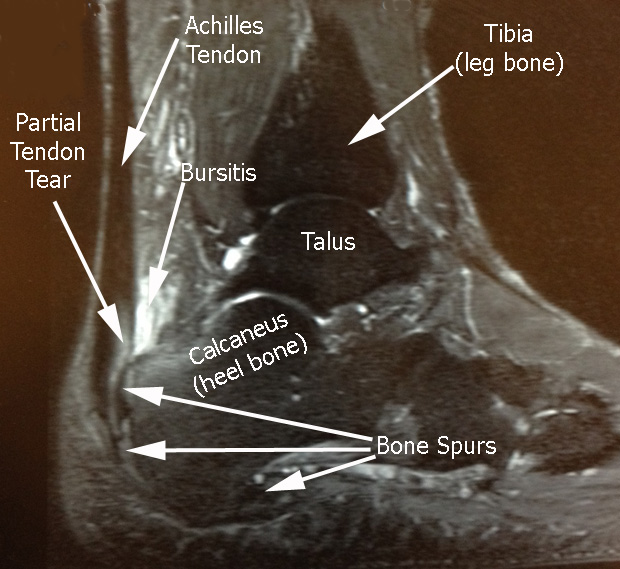
In the MRI of this patient, you can see the Achilles tendon, which higher up in the leg, above the heel bone, looks black.
The region just near where the tendon attaches, where the partial tearing occurs, looks more white on the MRI since there is more water content in the tissues due to the inflammation occurring. Also, the inflammation of the bursa can be seen
This particular patient happened to have a later misstep and pulled off the attachment of the Achilles, along with the bone spur, and required surgical treatment for reattachment of the tendon.
Sometimes, as part of the repair procedure, the tendon is too tight and needs to be lengthened with a procedure called a V-Y lengthening.
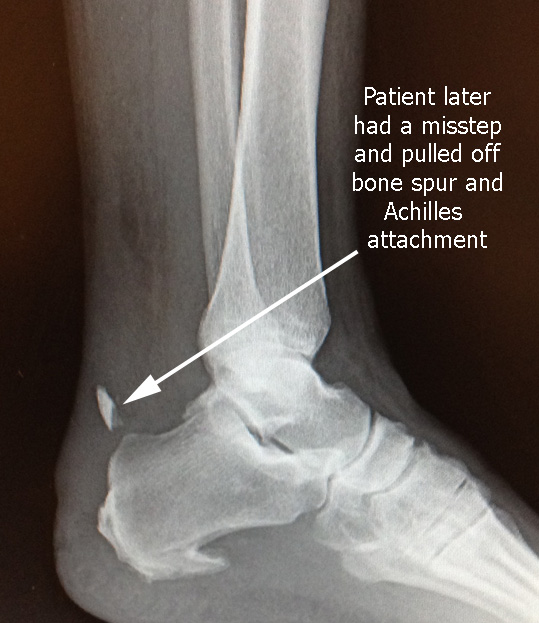

Treatment (non-operative)
Stretching program (for more info, see the page on plantar fasciitis, since the stretching program for that condition also works for Achilles tendonitis)
Anti inflammatory medicines
(Ibuprofen/Advil, Naprosyn/Aleve, Relafen, Lodine, Voltaren, Celebrex, Mobic, etc.)
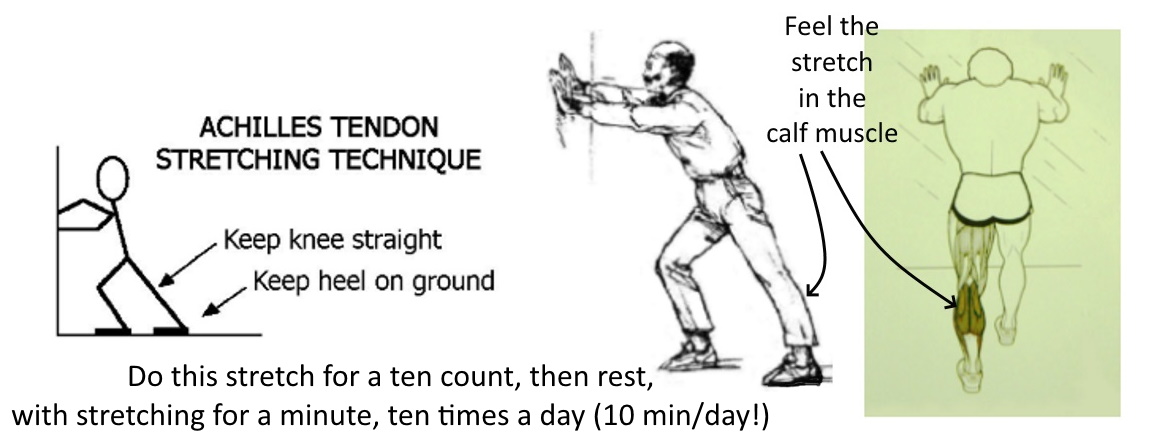
Walker boot (to be combined with a stretching program!!)
…but it takes between 6 weeks and 6 months to resolve completely.
When operative treatment is chosen, the decision is made by the patient, as they will at some point feel that no progress is being made, and they might decide to undergo surgical treatment.
